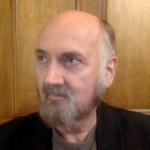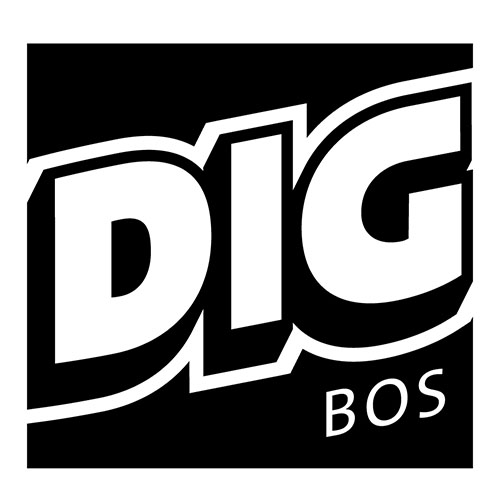
Bridging the chasm between law enforcement and justice, Part 3
Understanding the historical creation of police forces and their function in preserving the established order will go a long way toward explaining why police violence against the poor, people of color, and African Americans in particular persists.
For the first two centuries that Europeans were in North America, police forces did not exist. In fact, the primary emotional driver of separation from Britain was arbitrary use of police power. Writs of assistance were the 18th Century’s stop-and-frisk, but applied to White people.
That police were not needed now seems all the more remarkable when one considers that close to half of European immigrants came as convicted felons, or as indentured servants who had usually been deceived or coerced into coming.
The simplest explanation is, opportunity. Virtually anyone who was not a slave or native could find gainful employment. And while indentured life was harsh, laws in most colonies obligated masters to provide for the economic sufficiency of servants when their indenture ended.
North Carolina, for example, required that freed servants be given “freedom dues” of “fifty acres of land, three barrels of Indian corn, and two new suits.” This was probably the precursor to General Sherman’s post-Civil-War order that freed slaves be given forty acres of land and a mule, an order that President Andrew Johnson later rescinded.
So with low levels of inequality, the population’s days were occupied by work, and crime tended to be incidental. But where slavery existed, inequality was absolute. White people feared slave rebellions, and the direct antecedent to policing in the South was slave patrols, first formed in 1704 in South Carolina. Slave patrols’ three purposes were to capture escaped slaves, conduct organized terror to discourage slave revolts, and maintain slaves’ work discipline.
In the North, Samuel Slater opened the first cotton mill in Pawtucket in 1792, marking the beginning of U.S. industrialization. As manufacturing spread, so did a growing industrial workforce, increasingly composed of non-English immigrants and freed Blacks, who earned meager wages and lived and worked in inhuman conditions. Resulting increases in crime were initially dealt with by for-profit policing agencies who contracted with merchants and industrialists.
But the monied interests were more concerned with “order” than with crime, which rarely affected them directly. “Disorderly” reactions to economic injustice ranged from public drunkenness, to spontaneous labor actions that the elites called “rioting,” to organized strikes.
The creation of public police forces enabled the transfer of social control costs from the private sector to the state, while misrepresenting social control to the populace as crime control and the rule of law. That misrepresentation was supported by the promotion of perceptions that the underclass was biologically and morally inferior. The more different they looked and sounded from the dominant class, the more suspect they were.
Transforming policing from responding to criminal acts to preventing disorder—now defined as “crime”—legitimized constant surveillance of populations, which continues today.
Boston became home to America’s first professional police force in 1838, modeled on the London force created by British Home Secretary Robert Peel. He had, in turn, modeled London’s police on an occupying colonial force that he had created to suppress resistance in Ireland. By the Civil War, this solution had spread throughout urban America.
As these agencies’ primary purpose was maintaining order, they did not so much fight crime as regulate and profit from it. From their formation, they were corrupt and brutal. While protecting their commercial and political patrons’ operations, they took payoffs; organized professional criminals, trading immunity for bribes and information; bought votes and stuffed ballot boxes; and sold promotions.
Any organization that operates under such circumstances will inevitably develop a culture that is defensive, insulated from the public, resistant to scrutiny and regulation, and punitive in response to any perceived threat to their own. While the organizations’ activities may change over time, the culture will maintain great inertia.
As police forces expanded, public opinion opposed arming them with guns and authorizing the use of deadly force, but merchants and magnates favored it. And decision makers ultimately capitulated, since so many officers had already armed themselves and refused to disarm.
Following the Civil War municipal police departments were increasingly mobilized to prevent labor actions, using countless “public order” arrests and violently dispersing striking workers. Call boxes were set up and keys given to businessmen so they could quickly summon police enforcers of order.
Meanwhile, the doctrine of racial inferiority had also been used to justify the enslavement of those people whose work produced the wealth that, directly or indirectly, financed much of the young nation’s industrialization. By the end of the Civil War, the property value of enslaved humans was greater than all the nation’s railroads and factories combined.
To maintain that value, former slaves had to continue to perform exhausting labor for starvation wages. Slave patrols morphed into police departments charged with enforcing “black codes,” passed to restrict Black Americans’ freedom. After Reconstruction, black codes became Jim Crow laws, enforced by police departments and vigilante groups, which often included police as members.
Northern politicians feared the migration of freed Blacks and, through economic and regulatory methods, established ghettoes. In them, residents could be contained and pacified by police, using discriminatory law enforcement and excessive force.
The rise of the civil rights movement brought more repressive policing, brutal in the South and, initially, more nuanced in the North and West. But emerging groups that fought for systemic change, like the Congress of Racial Equality, Black Panthers, Young Lords, and American Indian Movement, brought more repressive responses, including assassination by police.
As the civil rights movement was waning, a movement of a different sort was gaining force among the nation’s economic elites. It would come to be called neoliberalism, and it would have a profound impact on policing.
Its core idea was that only capitalist markets could fairly allocate resources and reward individuals. So private enterprises’ only obligation was to maximize profit, and government must get out of the way by repealing business regulations, slashing taxes on the wealthy, privatizing as much as possible, and stripping the social safety net.
The ascendance of neoliberalism would require a substantial change to America’s political landscape. This began with Richard Nixon’s “Southern strategy,” which mobilized Southern White racial fears and White fear of crime and disorder elsewhere. The political shift accompanied government policies that crashed the economy in the 1970s, creating a permanent, disproportionately Black, underclass.
Ronald Reagan came to power exploiting the same fears and began implementing the neoliberal agenda in earnest, slashing regulations, tax brackets, and programs, and conducting war on organized labor. Bill Clinton continued the mission. Among his atrocities was the 1994 Crime Bill, which vastly expanded crime definitions, mandatory sentencing, the prison population, and police forces.
So police were obligated to control and lock up more people for more things, even as crime rates fell. At the same time abandonment of welfare, social, educational, housing, workforce, and mental health programs created more “disorder” while dumping enormous and expansive new duties on the police, for which they could not be prepared. Poor communities were abandoned to savage market forces, and police were still charged with keeping them pacified.
I have not been entirely fair in my recounting of police history. I have omitted the dozens of public commissions that were convened to reform policing, going back to 1894. Each reported, recommended, and disappeared, leaving little impact.
I have omitted serious internal efforts within police departments, beginning in the 1950s, to “professionalize” them. Those efforts did have substantial and tangible impacts, but were strenuously resisted by police unionization drives that exploded in the 1960s.
It’s also important to acknowledge that the endemic corruption that characterized early police forces has largely disappeared, while the quality of police recruits has immeasurably improved.
But the point of this column is not to described police departments’ good intentions, or the progress they have made in pursuing them. It is to demonstrate the ultimate purpose of policing, which confounds those good intentions.
From its outset in the U.S., policing has been about preserving the power relationships that define the existing “order.” There now exists an extensive body of research demonstrating that what gets defined as “crime” and targeted for enforcement is shaped by the management of racial and class inequality.
Police are obligated to be the interface between an exploitative and coercive political economy and its victims. As such, they must inevitably absorb resentment, resistance, and abuse from those whom they police.
Reforming, defunding, or abolishing police cannot resolve this structural conflict. Only transforming economic and political institutions that have long outlived their usefulness can do that, which is the subject of the next column.
READ THE WHOLE SERIES!
Bridging the chasm between law and justice
Bill Shelton lives in Somerville, where he sits on the Union Square Neighborhood Council and has been a trouble maker for 32 years.

